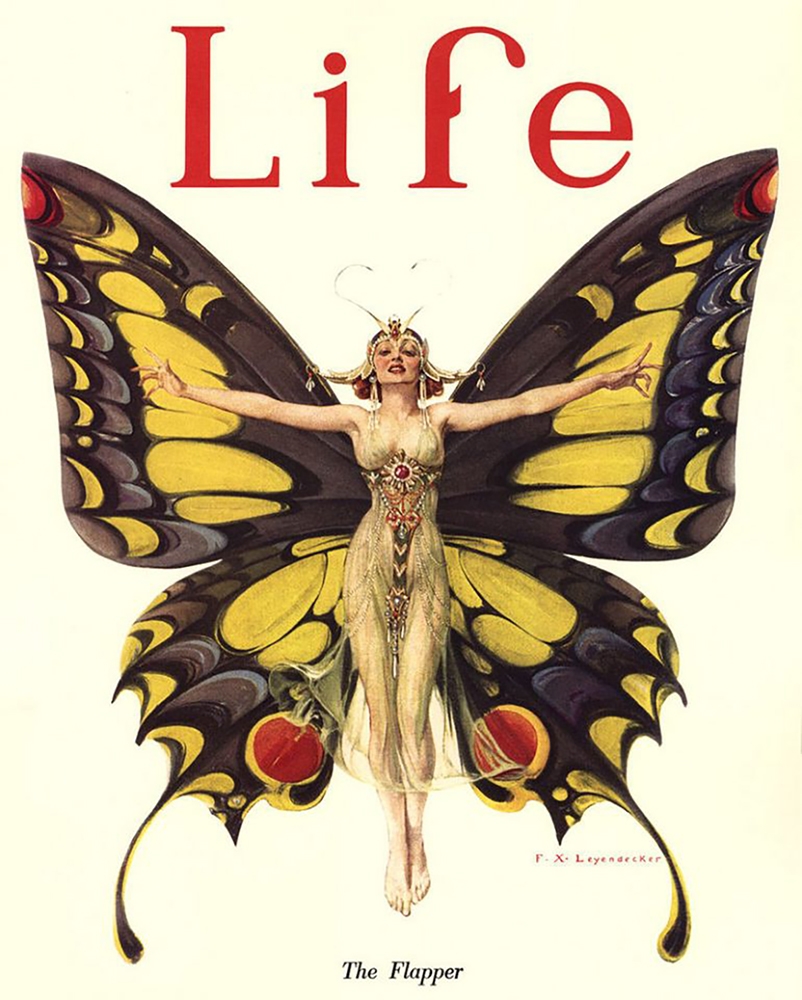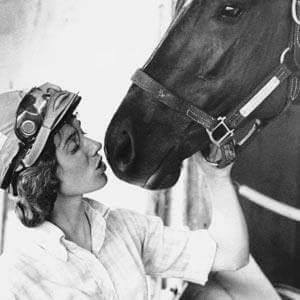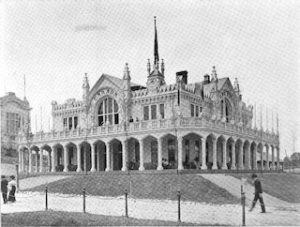Winner of the Fall 2016 StMU History Media Award for
Best Article in the Category of “Culture”
When one thinks of the 1920’s era one immediately thinks about Flappers. A flapper was considered a young woman who was very fashionable. This was a young female who enjoyed life to the fullest, flouting her unconventional standards of behavior and carefree party lifestyle.1 The spirit behind this movement was all about leaving the traditional ways of life behind and transforming into an independent woman.

Before World War I, the concept of femininity was referred to as the Gibson Girl. This term was used to describe these new independent and often well educated women. Gibson girls wore their hair long, pinned up and adorned with beautiful hats. They completed their ensemble by wearing long skirts and blouses that buttoned up to their necks. Despite their feminine appearance, these women were more than capable of doing the same things that men did. Examples of this include activities such as playing sports: skating, golfing, bicycling, tennis. These young ladies did not go out until they were asked properly by a young man who had good intentions and a promise of marrying them. Gibson Girls soon broke away from their traditional ways.2
In 1915, two years before America’s entry into World War I, a famous author by the name of H.L. Mencken introduced the word “Flapper” to the United States. Mencken stated that a flapper was “a woman who consumed music, literature and periodicals voraciously taking her cues for behavior and style from the media in front of her rather than the moral codes of decorum.”3 Another famous author, F. Scott Fitzgerald, famous for his classic novel The Great Gatsby, described the flapper as “lovely, expensive, and about nineteen.” John Held Jr., who was an American cartoonist, emphasized the flapper by drawing young girls wearing unbuckled galoshes that would make a “flapping” noise when walking.4 Despite the many different terms, Flappers were described essentially the same way: they were young girls who enjoyed the party life and had a sense of fashion.
After World War I ended in 1918, many things had changed for the men returning home, particularly the roles and values that women were embracing. The traditional values were gone and in their place came a faster, sleeker, and more daring approach to life. This time period not only ushered in an era of change in values, but it also established a new baseline for what was considered feminine. The Flapper Age was born and it brought with it a new and independent woman. These women smoked, drank, voted, cut their hair into bobs, wore eyeliner, and went to as many parties as they could—enjoying every bit of the social life along the way.5

During the 1920’s, fashion changed drastically due to a very famous designer, Coco Chanel. This woman helped flapper fashion to stand on its own. Typical flapper clothing included a simple sack like dress, which allowed women of all classes to make their own dresses and remain on trend.6 The waist of the dress was dropped to the hipline, and the skirt fell just below the knee. Stockings made of rayon were added and worn over a garter belt. To complete the look, bracelets were added and necklaces ran from the neck to the waist. Cloche hats sat atop their heads and drew the eye into a new hairstyle trend known as the bob.7 The make-up of flappers consisted of a red powder or cream that was used for the lips and cheek, eye-liner, powder for the face, and red lipstick that became very popular.
On January 19, 1919, the Eighteenth Amendment, also known as the Volstead Act, came into effect and gave way to the Prohibition Era in which the sale, production, importation, and transportation of alcohol was banned across the nation.8 This change in the legal system caused the sale and consumption of liquor and alcohol to go underground. The most rebellious thing a flapper could do at this time was to consume alcohol, and these young girls had a reputation for being giddy. The following year, on August 18, 1920, the Nineteenth Amendment was passed and women now had the right to vote.9 In 1924, the first radio launched more than 600 commercial channels around the U.S. The radio at the time was the social media on the flapper life. Many young girls swarmed the theaters to see the image of the flapper on screen. Famous actress Clara Bow, starred in the “Flapper” and made the look iconic.
On December 2, 1927, Henry Ford invented the Model A vehicle and car sales increased.10 Women were now owners of vehicles, and the car became a lifeline to a world full of excitement for the flapper in particular. With no one to stop them, they were free to come and go as they pleased. Liberated women were now able to go out and enjoy dancing during this era that was the Jazz Age. The most popular thing for a flapper to do was to go to a nightclub where she would drink, dance, and show off her moves. The era of the Flapper, however, came to an end with the Wall Street Crash of 1929. Many young women lost their jobs and the incomes that had given them such independence.11
Life in the 1920’s left a huge legacy for women to this day. Flappers and the forward-thinking concept of the modern woman is what initiated the change in society for how women were viewed then as well as how they continue to be viewed in present day. With their bold choice in attire, along with their new views and attitudes regarding femininity, both in fashion as well as social conduct, Flappers left behind the old traditional ways and paved the road for a more liberated female.
- Salem Press Biographical Encyclopedia, January 2016, s.v. “Flappers,” by R.L. Smith. ↵
- Kelly B. Sagert, Flappers: A Guide to an American Subculture (Greenwood Publishing Group, 2010), 1-2. ↵
- Brian DiPaolo, Flappers: Issues & Controversies in American History (Infobase Publishing, 2007), 4-5. ↵
- DiPaolo, Flappers: Issues & Controversies in American History, 4-5. ↵
- Soo Hyun Park, Flapper Fashion In the Context of Cultural Changes of America in the 1920’s (CUNY Academic Works, 2014), 1-2. ↵
- Salem Press Biographical Encyclopedia, January, 2016, s.v. “Flappers,” by R.L. Smith. ↵
- Sagert, Flappers: A Guide to an American Subculture, 3. ↵
- Sagert, Flappers: A Guide to an American Subculture, 5. ↵
- DiPaolo, Flappers: Issues & Controversies in American History, 2. ↵
- F.L. Allen, Only Yesterday: An Informal History of the Nineteen Twenties (National Humanities Center, 1931), 5. ↵
- Alan Brinkley, American History: Connecting with the Past Volume 2, 15 edition (New York: McGraw-Hill Education, 2014), 643. ↵




213 comments
Geraldine Fry
Congratulations on the Award! I love the fashion of the 1920s because of how the fashion told the women’s personality. It is amazing how much an impact the Flapper fashion had on society back then. Fashion was able to unite these like-minded individuals and they changed their whole society for the better. I wonder if we will ever see a fashion movement completely change our culture as flappers did.
Erika Longoria
This article did a great job at explaining the history and connections with flappers. It’s fascinating to read and learn that these women went against what was considered social norms at the time, which in end led to how our society is and acts today. From their high fashion to partying, flappers shaped future women. Seeing that drastic change from traditional ways to how the flappers stepped out and became independent is so fascinating.
Phylisha Liscano
Hello Aurora, congratulations on the award. This was a very interesting and well-written article. I enjoyed reading and learning more about the flapper era. The way you described life in the 1920s seemed like so much fun. It’s very cool how the women left the traditional ways and paved a road to a different fashion sense, giving women independence. Overall, excellent article and very fun to read.
Luis Molina Lucio
I did know a bit about The Roaring Twenties and did have an idea of what a Flapper was but this article really solidified my knowledge on these both topics. The way Flappers were described in this article allows me to understand how Flappers were young women looking for freedom and just women with a more liberal ideology. The Roaring 20s allowed for the Flappers because after the U.S going through a hard time now it was a more prosperous time were new ideologies were more likely to be accepted. Very exceptional description of Flappers in the Roaring 20s and why they came about.
Kayla Cooper
First of all, congratulations on the award! This article definitely got the award and deserved it! It was well written and talked about. You introduced the flappers in the beginning the best way possible. Then talked about the flappers leading up to how they changed the way women are seen even into present day. The pictures also caught my attention and they are perfect for this article!
Mckenzie Gritton
The flappers really broke down the walls for social norms for women. I think they really helped to influence a new normal for women today. This article did a really good job keeping my attention while also staying informative. Ive always admired flappers in movies, and now I have even more reason to admire them. Great job!
Sara Davila
The author did an excellent job explaining the Flapper movement. I enjoyed how they incorporated other female movements that were occurring before the Flapper period and how it led up to the creation of the Flapper culture. I feel like I would have been a Flapper if I was alive during this time. I attract myself to fashion, makeup and social events. Not only are there physical characteristics that make up a flapper, but also mental. Flappers we’re independent and motivated to be apart of the political and social community.
Maria Jose Haile
This article is very fascinating because it shows how the pop culture has changed and affected women’s fashion from the social changes of World War I and the Roaring 20’s. Events like the Prohibition allowed for women to wear risker clothing and have shorter hair than the standards before. Femininity in fashion has evolved through the events in history and such has allowed for women to gain confidence in themselves. Lastly, congrats to the author to winning a reward.
Briana Gonzalez
I’m AMAZED by this article it is one of my favorites! Did not know much about The Flappers but the detail of what they wore, and the images gave me a good, detailed outfit of how it changed. But what really shocked me was they would ask their man for permission, but The Gibson girls broke the traditional ways.
Velma Castellanos
First off, congratulations on best article for culture. I have always heard about flappers but never bothered to read about them until now. I can say this is definitely an interesting part of history for us women. It is amazing of these flappers broke the barrier of how a woman was supposed to act and broke social norms. Overall, I really enjoyed reading this article and you did a great job in explaining it.